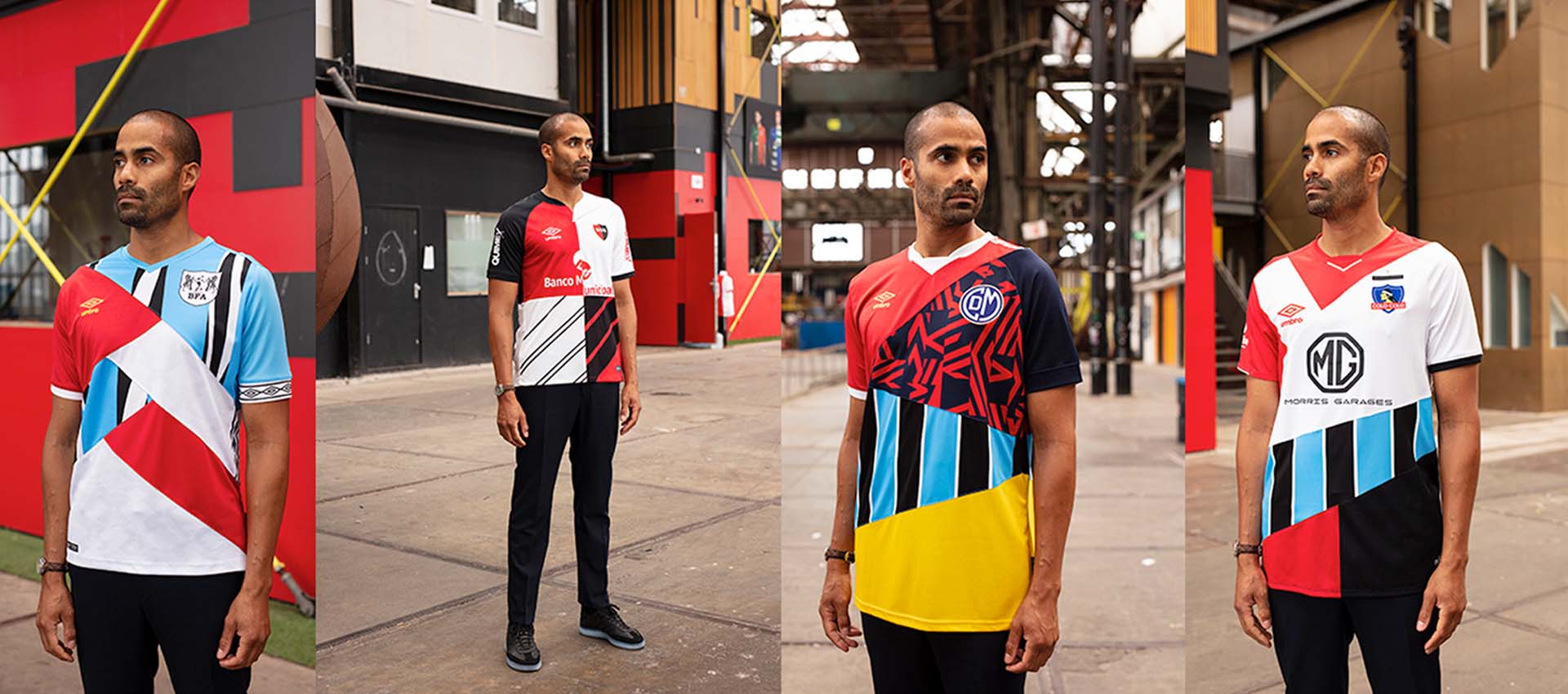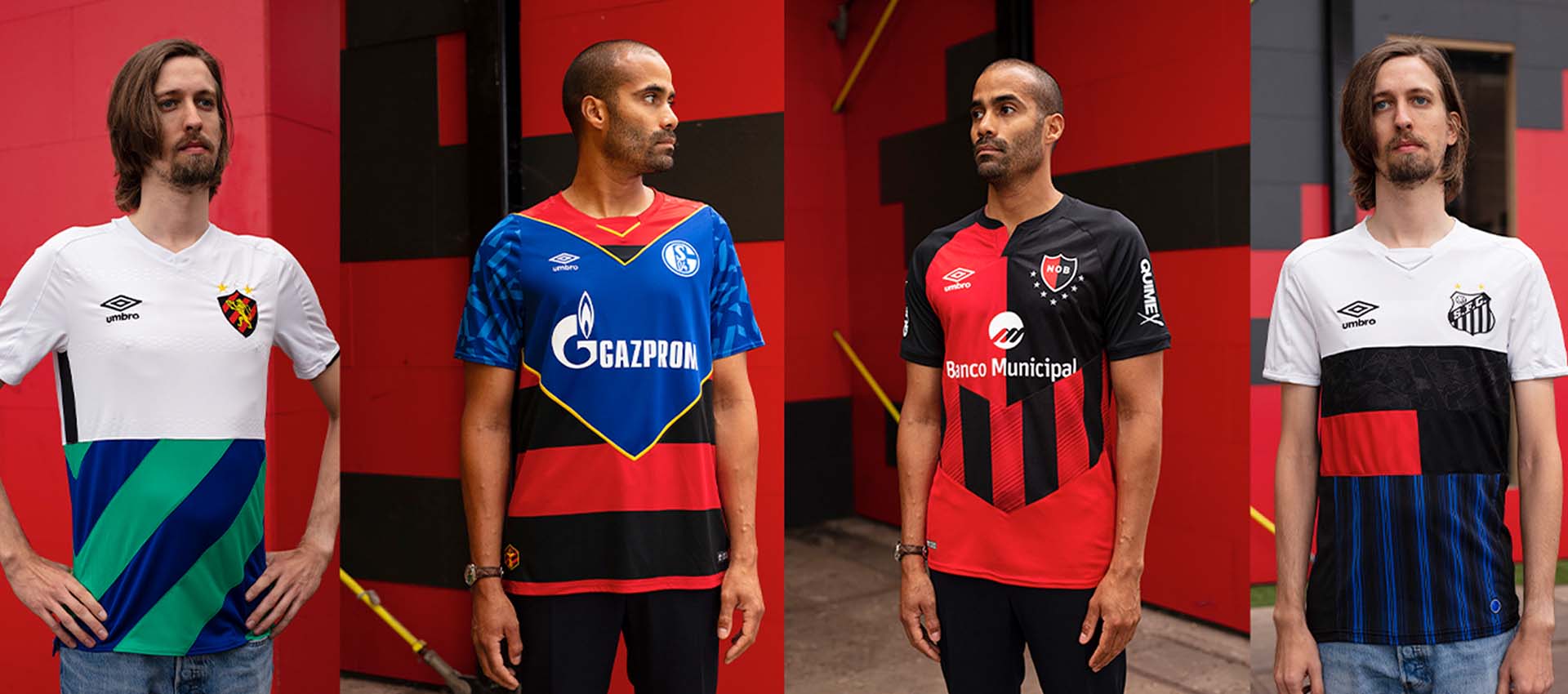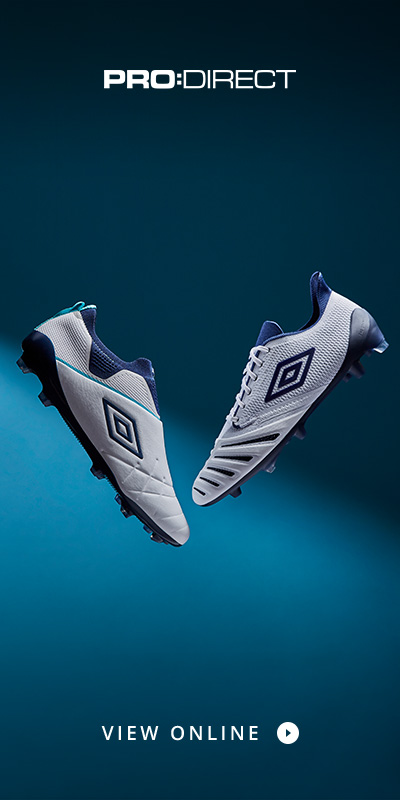When the good folk at Umbro had the idea to run a competition that would see fans selecting their favourite shirts to be combined into one, there was only one man they could speak to. Floor Wesseling, aka the founder of Blood In Blood Out, is the master of the mashup, and we caught up with the Dutch maestro to get his take on the unique competition.
Earlier this year Umbro launched the ‘For the Love of Shirts’ competition, offering fans the chance to have an exclusive shirt designed and created for them by renowned mash-up artists Blood In Blood Out. Double Diamond followers were asked to choose their favourite clubs from over 60 different teams and also to explain the story behind their choice. From all submissions, Umbro and Blood In Blood Out carefully chose the 11 best stories and transformed them into unique mash-up shirts. Here, we get an insight into the process from Blood in Blood Out founder, Floor Wesseling.
When did you first start mashing shirts, and what was the inspiration behind it?
I started doing it after a game between Germany and Holland in 2004 in Portugal. It was because a friend of mine said at half time that he wanted to go and live in Milan and we had this discussion about whether he should support Inter or AC Milan. Then it hit me that I had to combine these shirts and give it to him. And it had to do with my fascination with heraldry, family coats of arms – I always wanted to work with this mythology and old identity, making that as a graphic designer, so during that tournament, being a football lover and a football shirt lover, it hit me that I had to cut it and combine it, like two families joined together.
So the next day I went to the local flea market and bought these cheap tourist shirts, and the first one I made was Holland and Germany – I couldn’t find the Milan tops! So I made it on my girlfriend’s sewing machine. It was horrible, but it was great! I still have it framed in the studio downstairs.
The idea of a football shirt being coat of arms – is that a driving force behind what you do?
Yeah, so by doing that and following that process, I thought I would carry on and follow these chapters of the book, and I started to combine pieces. What I thought was, looking at those first attempts, I needed to have proper football shirts, the real ones. I started to realise by dissecting them how much value that they have; it’s not just a piece of fabric where you have, say, Arsenal or United – it’s loaded with culture. The cultural value of that fabric becomes massive for that area, because it has the crest on it. It’s assembled as this shirt, as this literal coat of arms, like a piece that a knight would wear in the battlefields.
It all started to come together in the first few years by cutting and stitching shirts, looking at the designs and looking at all the pieces that make a shirt a proper football shirt. As a graphic designer and a football shirt lover I had a massive collection already, even though I was starting to cut them.
How did you get involved with Umbro for the ‘For the Love of Shirts’ competition?
We follow each other for a while now on social media and they approached me for this project. They came up with the idea of using this concept for their collection and I thought it was great, because I’ve always loved Umbro, especially from the 90s. They were like the brand that made football cultural. You can always see from an Umbro shirt the attention and detail, and just a love for shirts. They always had it.
From when I was young playing in football shirts – and as an Ajax lover, Ajax was sponsored by Umbro for a long time – Umbro was like a statement. So it wasn’t even a decision for me, I immediately wanted to work with Umbro. Their idea of story telling also really resonates with us. That’s what we do as well. SO it was an easy project to do this together.
What are the challenges that you face with a project like this?
Well, sometimes there are some legal issues – we have to convince the clubs to join. But that was sorted quite quickly. You can work around that. Restrictions are sometimes good for a designer! Then, to tell the proper story, to find the balance between the different elements that you want to put into the shirt. Sometimes you don’t get it right the first time and then by conversations you get it right. But it’s about fun, it’s about challenging yourself.
There was also a challenge in getting the right balance across the total 11 winners, so not just 11 of the same shirts, but 11 fresh ideas with the time that we had.
Can you talk us through the design process when you’re first presented with four shirts to mash?
It helps that we’ve been doing this for a long time! So for this competition, every winner had to have a good story behind their shirt choices, that was key to being nominated. That is the main factor of the design, so if a guy starts talking about how he lives here, his girlfriend comes from here, and he visited a city and saw a game there, that could almost be an organic priority or hierarchy within one shirt. Also in identity, where are you from, what is your blood, it dictates that this crest should be shown, or that that should be the base of the shirt, then the things we add are the extras almost.
The second thing is how does the shirt look. Do you use home or away? Is it recognisable if you just use a blue part of a shirt or not? Like for instance, the Sporting Recife shirt has horizontal red and black hoops and that’s recognisable and easier to use than say, Schalke away, which is just white, or a Burnley home. It’s that kind of thing.
So first is the identity of the person, what story beats need to be higher priority, and second is how does the shirt look.

How much input did you have in selecting the designs to be created?
It was a team effort between ourselves and Umbro. We went over it together and they showed me the stories that they had. They had made a shortlist of about 50 from around 10,000. But I think most of the entries were just “I like this shirt”, so they whittled it down to 50 great stories, and we went through all of them. We tried to find some different stories too, because a lot of it was the same. You can’t make a top 11 of only Schalke and Burnley. SO the most interesting stories were noticed, and the differences were key.
So what was the biggest factor in selecting the winners, the story, or the shirts?
It was a bit of both. The story was key, but again, like I said, you can’t just take all of the same club. So we wanted a story that was from Asia, from Japan. We had a story from Botswana. There was just one guy from the UK. There was one from Germany, Spain, even South America. So we wanted to have the full scope, make it a global thing.
Which was your favourite of the 11 shirts you created?
Funnily enough, the guy from the UK. To me he was sort of our key figure. I took that shirt and that story because it had a lot of nice shirts; Gremio, but also the Al Ahly in Egypt, which is a massive club with a very nice home and away shirt as well. It was shirt number 11 and it had all the base colours of red, yellow and blue in it. It has this great story of different countries like Egypt, and continents like Africa and South America, the club Deportivo Municipal in Peru, and Gremio also. Plus it had, if I remember correctly, a bit from Zimbabwe. So the yellow element is from the Zimbabwe home. I loved that shirt, the combination, the fact the guy was from Manchester, the closest to Umbro HQ, and yet it was the most exotic as well.


Check out more of Blood In Blood Out's amazing work here.





















